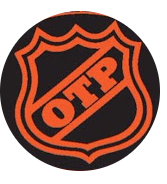The Collective Bargaining Agreement (CBA) is nearing expiration. The NHL and NHLPA are well ahead of schedule for a new agreement in current discussions. However, it appears that big conversations are happening behind the scenes about a major change to the Collective Bargaining Agreement.
In a recent interview the changes were discussed. Both Gary Bettman and Bill Daly had statements for the press. The information had some important point that could see sweeping changes.
The CBA and the CHL-AHL age rule
The post-draft life of a prospect has some limitations. If a player is signed by the CHL, they cannot currently sign in the AHL. If a player is not ready to be in the NHL, they have to return to their junior pro team. They cannot move to the AHL until age 20.
This has been a source of frustration for NHL teams. The gap in play between pro junior and the top minor league is large. A player may need time to adjust to the speed and physicality. Going back to junior hockey doesn’t provide the same level of competition. Many 19-year-old prospects could benefit from the American Hockey League but aren’t quite NHL-ready yet. Simultaneously, they are too advanced in their development to be adequately challenged by junior hockey.
The proposed CBA change could allow teams to have those prospects in the AHL. That could lead to call ups in the initial season and more exposure to the top level of play. It seems to be a proposed change that is long overdue. This could drastically alter the prospect development for all teams.
LTIR abuse
Each year there are teams deliberately misuse long-term injured reserve (LTIR) as a salary-cap dodge. Some utilize LTIR to “stash” talented players for the postseason. At playoff time, those teams see the return of important players. The team otherwise would be over the cap ceiling, but those restrictions are lifted at year’s end.
The question being asked is one of intent. Injuries can legitimately take a player off of the roster. That cap hit opens up if the injury is deemed long term. The available space can be used to acquire another impact player. The optics are not great if that team wins a Stanley Cup.
The solution isn’t a simple one. There are legitimate injuries, there also seem to be abuses of the policy. It can no longer be ignored, but the exact remedy may be complex. This may be a situation requiring third party involvement. Whatever the answer, the integrity of the game requires a remedy.
Note: The video below was made last year, but the same key issues with LTIR manipulation are still at stake.





The simplest solution to the LTIR problem is that teams should have to be cap compliant WITH The injured player on game 82 whether he plays or not. If they cant be cap compliant, the player in question should have to sit out a specific amount of playoff games. (at least 2, 4 if you want to be tough) before they can play.
After that, regular rules apply. The penalty may not be perfect but it will prevent teams from holding out players who “will be ready by game one” when they are healthy enough to play at the end of the season.
I agree on holding the player from playing. I’d actually be tougher depending on how long they were out. Possibly make them sit for the opening round or more. I do like the idea of compliance. Nice drop in
I look at 4 games as maybe being ideal, because then there is the chance if they are swept out that he doesn’t play at all.
I think that’s well put, well thought out. The concerning issue is the amount spent, the type of player added. If a team can bring in an 8 million dollar player (regardless of cap retained) that’s a higher impact than adding another 1 or 2 million dollar player. You may well be on to something in how to approach it. I’d also consider cap recapture in the following year. A penalty to recap an overage created by those signings (not call ups in the organization). Make it burn for a bit. I like where you’re at on this. Again, really nicely done.
If I was a young player in the juniors, I would consider going to the NCAA over playing in the AHL.
First if I do not like where I was drafted (round or team) then going to a US college can help me improve my draft status.
The NHL/NHLPA should be addressing the pay a young player gets on the two-way contract.
If you are 18-21 then you are stuck with a three-year ELC
22-23 is a two-year deal and 24 and older is a one year deal.
The other area that the NHL/NHLPA has to address is the pay a young player can be stuck with as the AHL portion of a two-way deal can be as low as $52,725. With the NIL program now in place you will see players choosing college over signing at 18-21 just to avoid bad two-way deals